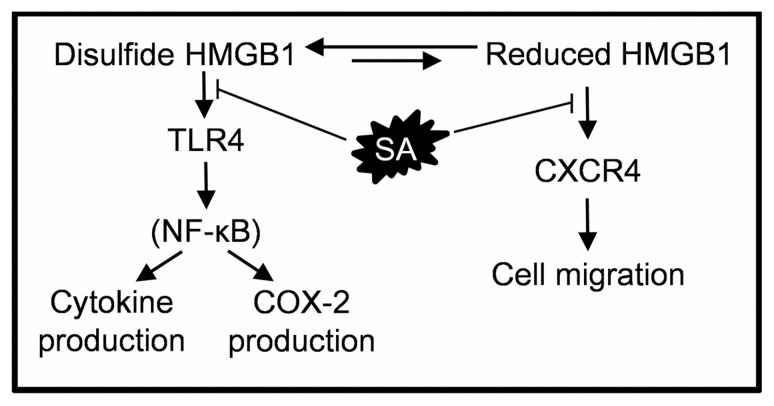Figure 6.
Schematic representation of SA’s mechanisms of suppression of HMGB1’s proinflammatory activities. Extracellular HMGB1 is recognized by two different receptors, CXCR4 and TLR4 (16). The fully reduced HMGB1 induces CXCR4-mediated cell migration. SA inhibits cell migration induced by HMGB1. The disulfide HMGB1 induces TLR4-mediated activation of the NF-κB signaling pathway (16,17), resulting in transcriptional activation of genes coding for COX-2 (PTGS2) and proinflammatory cytokines (IL6 and TNF ). SA suppresses disulfide HMGB1-induced PTGS2, IL6 and TNF expression.

